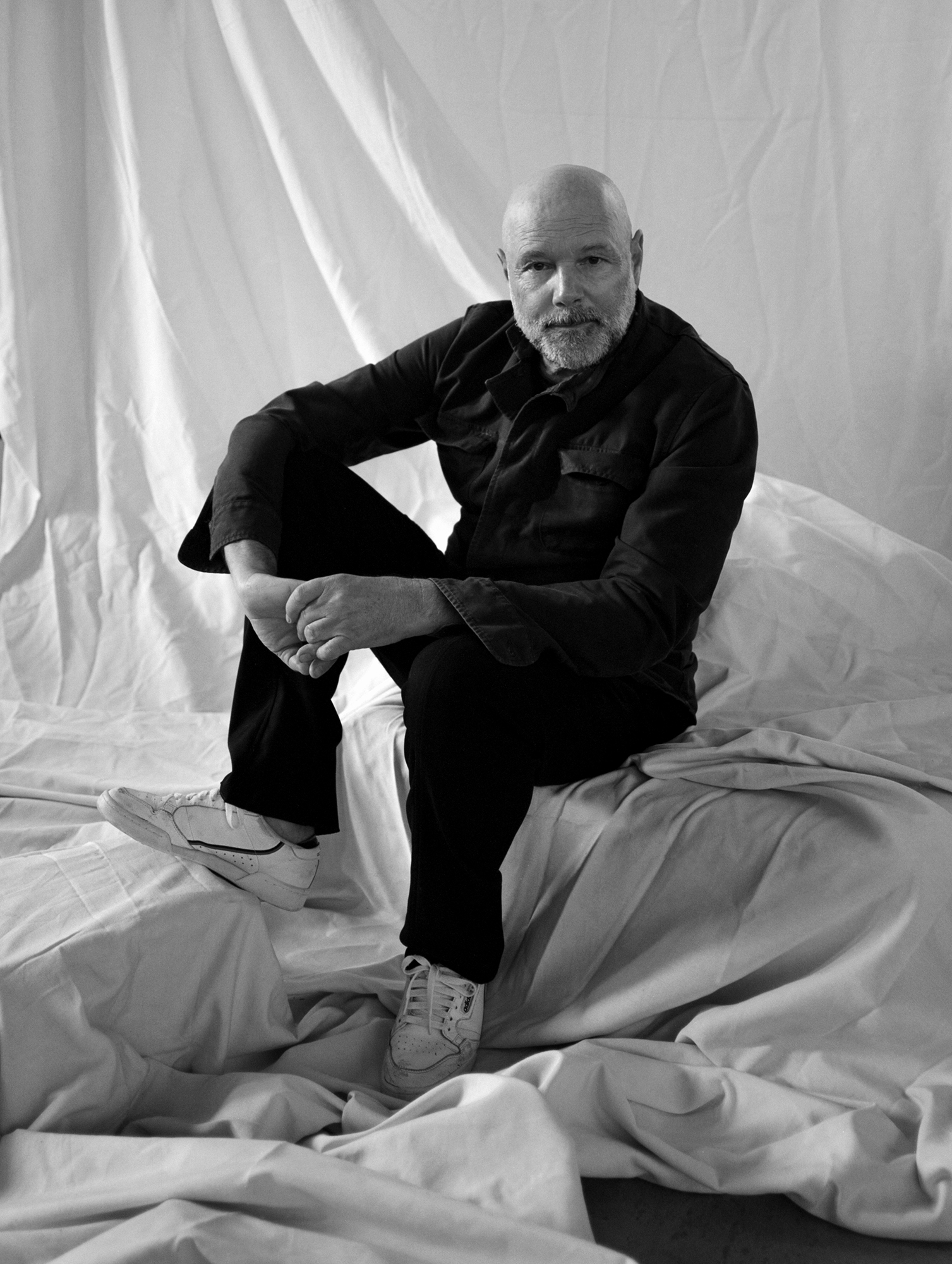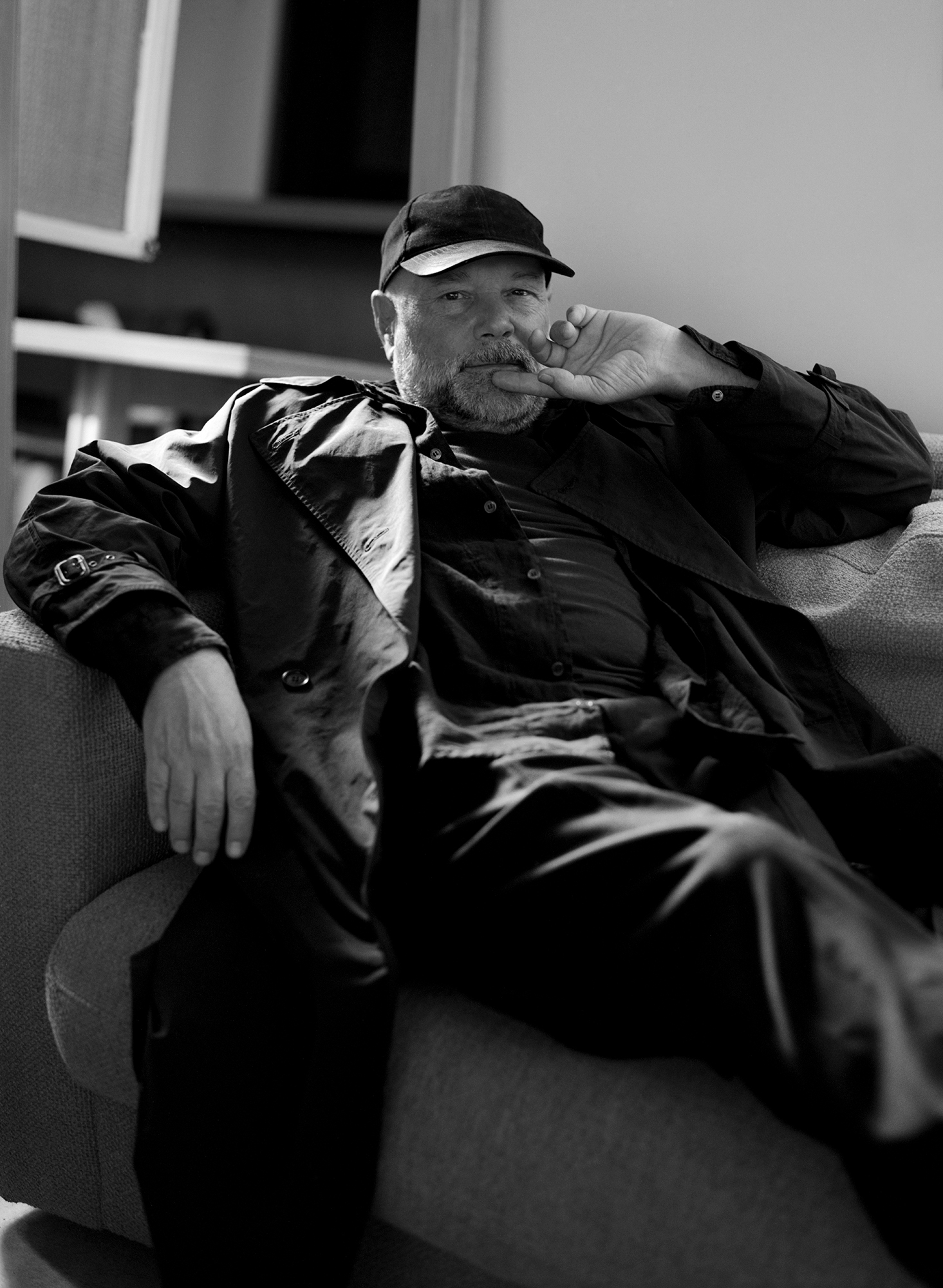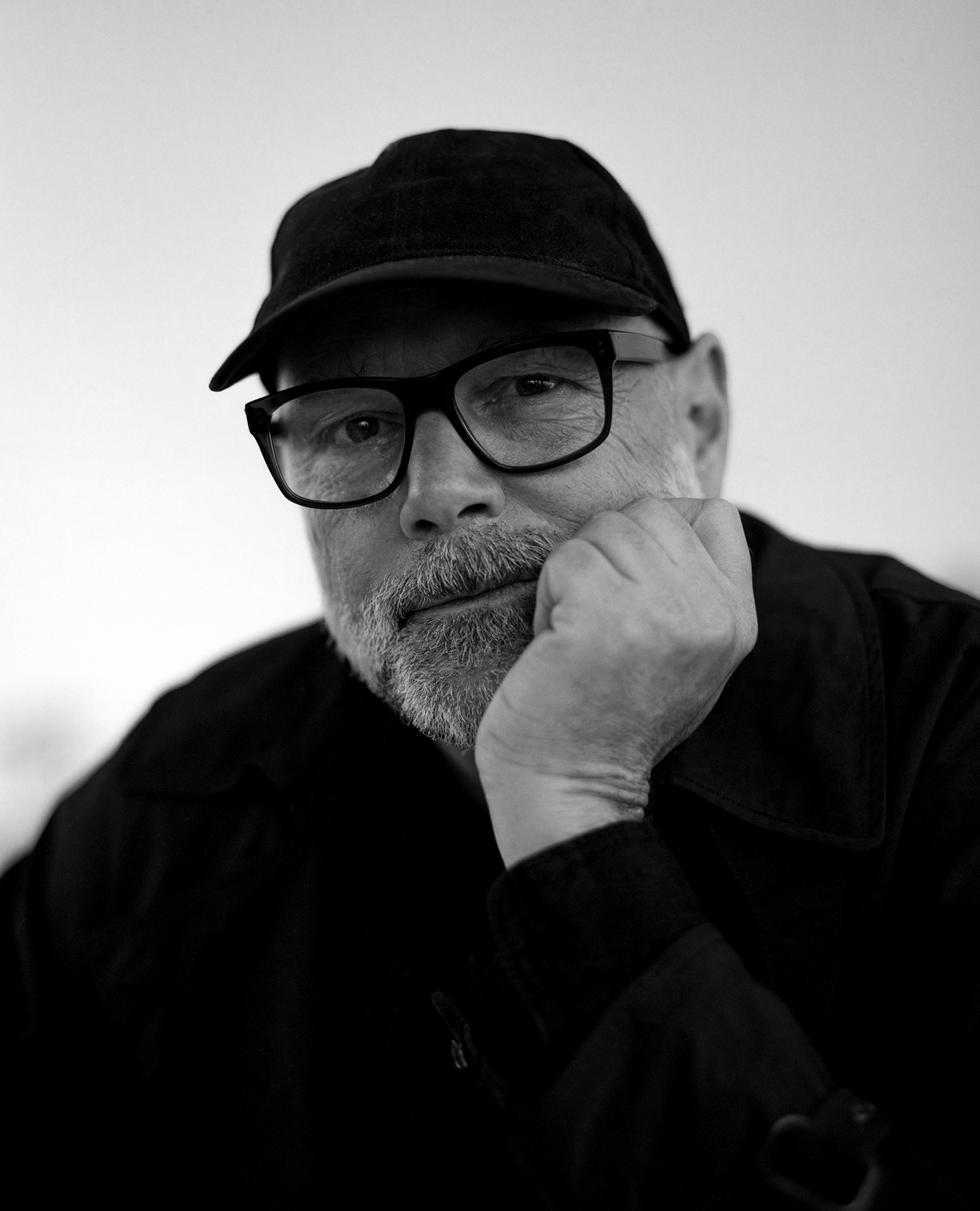Heroes: François Berthoud
The renowned creative discusses his early connection with illustration, foray into the industry, and newly released book: Fashion, Fetish and Fantasy

This feature appears in V139, Supermodel, Superhero issue, now available for purchase.
When François Berthoud walked into the Milan office of late fashion editor Anna Piaggi—flanked by a troop of emerging comic illustrators—the trajectory of the illustrator’s now illustrious career sprang into full color. Freshly graduated and a mainstay of Milan’s dynamic comic scene, Berthoud’s creative edge stood out to Piaggi—who was the editor-in-chief of the now defunct cult glossy, Vanity. “This group of crazy, young comic strip artists were at Condé Nast with Anna Piaggi—most of them had no clue what fashion was,” the innovator remembers. “They were not interested in fashion, [so] it would happen that I illustrated a number of covers for the rest of the life of Vanity.”

Piaggi’s stamp of approval catapulted Berthoud into the epicenter of Milan and Paris’ bustling fashion scene, a far cry from the serene Swiss mountains that backdropped his adolescence. Though the restraints of a small-town upbringing were omnipresent, Berthoud developed an early connection with imagemaking mainly through his childhood art teacher whose studio he would frequent on the weekends and in between academic courses.

There, Berthoud gained an appreciation for fine art and photography, all the while yearning for a reality beyond his quaint upbringing. “My teacher had Japanese magazines, which were strange, but it was incredible to see this crazy photography,” Berthoud recalls. “I was fascinated with art. At the same time, I didn’t know you could have a [career] doing that.”
Shortly thereafter, with a degree in graphic design under his belt, Berthoud made the move to Milan where that fateful encounter with Piaggi ensued. While dreaming up the glamorous covers of Vanity, the creative developed his now famed signature: romantic, bold, and sharp—with a touch of boundless eroticism, of course. Catching the attention of brands like Prada, Givenchy, and Chanel and publications such as Visionaire, Numéro, and Vogue, Berthoud became the industry’s go-to illustrator for all things fashion, fetish, and fantasy.

Now, nearly four decades after the start of his career, Berthoud is set to release an encompassing book under the aforementioned moniker. François Berthoud: Fashion, Fetish and Fantasy is an encyclopedic showcase of the artist’s boundary-breaking work, journeying through fashion’s finest decades while highlighting his most eye-catching illustrations and collaborations. And with contributions by Beda Achermann, Chris Dercon, Jean-Paul Goude, Christian Kämmerling, and Carla Sozzani—who, like Piaggi, trusted Berthoud’s vision early on—the collection is a must-see, showcasing his decade-spanning contributions to the realms of art, fashion, and culture. “The book is bold, the colors are extremely brilliant, it’s a visual treat,” Berthoud explains. “It’s intellectual [and] it’s a very interesting way of putting my work in context.”

That conceptual edge is something that has always fascinated Berthoud, whose work has constantly re-upped his yearning to color outside the lines of fashion and art’s rule book—all the while revamping both industries original fascination with handmade craft. His hands-on illustrations are couture-like—artisanal in its approach and simultaneously modern and nostalgic in identity. And while the artist now creates from his Milanese studio, which is just minutes away from those infamous Condé Nast offices, that fateful meeting with Piaggi still reverberates in the background—what was once a fresh, blank canvas, is now, Berthoud’s formidable magnum opus.
Read the full interview with Berthoud, below!
V MAGAZINE: First I wanted to talk about your upbringing in Switzerland—what were you interested in as a child and what did you do to pass the time?
FRANÇOIS BERTHOUD: I was born in Switzerland in a small city in the mountains. And, of course, the situation there was tough because Winters were really, really hard. But at the same time it was a very beautiful surrounding of nature. So I would always be in nature—in the Summer, we would go into the forest to bask in the little lakes, and in Winter we would go sledding or skiing, those sorts of activities. I was very physical as a child and it was great.
Of course growing up—around 15, 16 years old—the situation changed because it’s a very small city and there was not much to do. I spent some years being a bit bored, going to school not very interested. I was really looking forward to doing something different and that meant leaving that place.
V: During that period, did you have a sense of what you wanted to do professionally? I know you eventually got a degree in graphic design, but did you always have an inkling that you wanted to be in the realm of fashion and art?
FB: Well I was fascinated with art. At the same time, I didn’t know you could really have a work life doing that sort of thing. I was young, I didn’t really know what it meant to develop your studies and how to face work in general. It was a bit later on [that] I found out that graphic design was a real job that people would do. And it was a real job, so that was already a step in that direction.
V: And after you completed your degree, you moved to Milan where you started to work with comic book artists. Can you tell us what prompted you to make the move to Milan and what those early days in the city were like for you?
FB: I was lucky to get a job at Conde Nast immediately after my degree—I got in touch with an editor and they hired me without really knowing who I was. And I didn’t really know much about how to make magazines at the time, but they hired me and I worked with Carla Sozzani, she was my boss. And we were doing magazines, like Vogue Pelle—Vogue Leather and leather goods. At the time, there were all these different magazines under the Vogue brand—here in Italy, Vogue Bambini for kids, for brides as well.
And that was great because I was in the middle of the action anyways, you know? And I was in this city, which I was discovering and I found extremely exciting. My mother’s Italian and I could speak Italian—not very well when I moved there, but well enough to be able to work normally. And I love the city, I really enjoyed myself a lot in the early ‘80s, which was very, very different from what it is today. It was a bit chaotic, a bit dirty, a bit mysterious even. Coming from Switzerland, that was nice. I loved that this was my daily job.
Then in the evening, I would draw comics because I had this French culture from Switzerland—I was living in the French part of Switzerland—so comic strips had always been big in France [and] in Belgium. And I read a lot of those comic strips and I loved those graphic stories and aesthetics. I had that as a cultural background very strongly. So I always dreamt to do some comics and I met people here. So I was doing those two parallel activities for a while, but at a certain point, it was impossible to do both.
V: I wanted to ask you about your artistic practice and your design signature. You obviously have a very distinct signature and aesthetic that’s very precise and also erotic and emotive at times. Can you tell us where that design signature and aesthetic stems from and how you’ve developed that over the years?
FB: When I started, my idea was that I wanted to create something that if I would see it in a magazine, I would be surprised and amazed—that was my criteria. First of all, it should not look like something which already exists. Of course you can’t be 100% original, but I didn’t want to do something which could look like something else. And it had to be something really strong. I wanted to have very strong lines, very bold. And I was trying different media to achieve this result with scratching ink on film or with a cutter to have those very, very sharp lines.
And it was not bad, it was okay. But then I said, “maybe I’m trying to imitate something,” which is engraving, you know? I thought, “okay, let’s give it a try.” And the result was immediately very pleasing. I liked the result very much since the very first time I used this technique. So then I developed it, and that was my first signature, which I kept for many years. But then I moved from using engraving because I discovered other ways to use it. I also felt that the time has changed, so I had to change something.
So I moved onto other media, other techniques, or using the same technique but with different results. It’s like I added some words to my vocabulary [by] using other other techniques which I used according to the project [and] what I want to do. The thing is, for some reason, even if the aspect is very different, it, my [illustrations] stay together in a way—there is something which makes them similar in a way.
V: I wanted to finish with a few questions about your newly released book. I’m curious as to what made you want to release this book and what readers can expect in terms of imagery.
FB: It’s a collection of images that date back to the early 1980s. It really covers all my different periods and the different interests [that] I have had. It’s bold, the colors are extremely brilliant, it’s a visual treat. Then we have a very nice text from Chris Dercon, writing from the point of view of a curator and museum director. It’s intellectual [and] it’s a very interesting way of putting my work in context. And there is an interview that we’ve done in Germany, I asked Jean-Paul Goude to write something.
And that was also quite an experience because I called him and I don’t know him. I know his work, he said he knew my work, but we never met. And he immediately said that he would do it, but he said, “I can’t write.” And I said “It’s not a problem. We’ll have somebody come and, and pick up what you say and put it into words.” And he said, “but the second thing is, I tend to talk only about myself.”
Which is totally true. So we had this meeting and he was talking a lot about himself, about his story, which was absolutely fascinating. And we had a very good time, but at the end of the day, we kept trying to push the layout to him to have a look at this book. But at the end, there is a very nice contribution by him in the book. And the book is in a large format, it’s very big. The design has been done by Beda Achermann and Studio Achermann [and] printed in Germany.
V: Aside from the book moving forward, what is next for you?
FB: Right now, I don’t have a specific project. I’m working but I don’t exactly know where this is going to lead me. I’ve been illustrating posters for the Zurich Opera for 12 years now, and I’m still doing it. So it’s quite a nice project, going on year after year. It will go on at least for another two years, maybe longer but I’m not sure. We’ll see. And we’ll do a book about this work—it’s 12 posters a year, so it’s piling up, it’s becoming something.

Francois Berthoud: Fashion, Fetish and Fantasy is now available via Rizzoli.
Discover More
